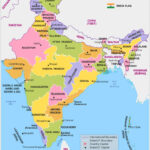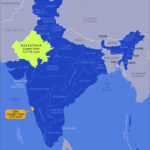Static GK -RBI Governors list of India in 2023
As India’s central bank, the Reserve Bank of India (RBI) has had a number of illustrious people hold the position of governor over the years. Prominent economists, decision-makers, and financial specialists who were instrumental in forming India’s monetary policy and financial system are on the list of RBI Governors.
Raghuram Rajan, who held the position from 2013 to 2016, is among the famous names on the list of RBI Governors. Rajan is renowned for his attempts to stabilize the Indian economy amid a time of global economic unrest. During his tenure as governor from 2016 to 2018, Urjit Patel concentrated on bolstering the monetary policy framework and dealing with problems pertaining to banking sector reforms. The current RBI Governor, Shaktikanta Das, who took over in December 2018, has played a key role in putting policies into place to ensure financial stability and economic growth amid trying circumstances.
These RBI Governors have made a significant contribution to the formulation and implementation of monetary policies, the regulation of the banking industry, and the maintenance of the financial system stability in India. Their knowledge and vision have shaped India’s economic and financial environment, making the list of RBI Governors one of the most esteemed in the nation’s history.
The below given is the complete list of governors of the Reserve Bank of India (RBI) from 1935 to 2023
General Awareness Questions on RBI Governors of India in 2023
The blog provides the complete list of RBI Governors of India from 1935 to 2023. The RBI Governors of India topic is the most commonly asked questions in the General Awareness section of any competitive exam. The below given Important General Knowledge Questions on RBI Governors of India helps you to prepare you for the exams like IAS, State PSC, SSC, UPSC , Bank PO and other competitive exams
RBI Governors of India List with Tenure
| RBI Governor Name | Description |
| Sir Osborne Smith Term: April 1, 1935 – June 30, 1937 Tenure: 2 years 90 days | Sir Osborne Smith was a British banker who previously held the position of managing governor at the Imperial Bank of India. He left his position as governor before his tenure was up. |
| Sir James Braid Taylor Term: July 1, 1937 – February 17, 1943 Tenure: 5 years, 231 days | Before becoming governor, Sir James Braid Taylor, an ICS officer, held the positions of RBI’s deputy governor and controller of the currency. Under his leadership, the Bank successfully transitioned from a silver currency to fiat money and survived the years of World War II. While in office, he passed away. |
| Sir C.D. Deshmukh Term: August 11, 1943 – June 30, 1949 Tenure: 5 years, 323 days | Before taking over as governor, Sir C.D. Deshmukh, an ICS official, was RBI’s deputy governor. He was the state’s first Indian governor. During his governorship, the assets and obligations of India and Pakistan were divided, resulting in the partition of India. |
| Sir Bengal Rama Rau Term: July 1, 1949 – January 14, 1957 Tenure: 7 years, 197 days | Before taking service as governor, Sir Bengal Rama Rau, an ICS official, served as India’s ambassador to the US. Before the end of his second extended term, he resigned as governor. |
| K.G. Ambegaonkar Term: January 14, 1957 – February 28, 1957 Tenure: 45 days | Ambegaokar was an ICS official who held the position of finance secretary before being appointed RBI deputy governor. After Benegal Rama Rau resigned, he was chosen to serve as the interim governor. |
| H.V.R Lyengar Term: March 1, 1957 – February 28, 1962 Tenure: 4 years, 364 days | H.V.R Lyengar, an ICS officer, presided over the State Bank of India before taking office as governor. During his governorship, the Indian currency was converted from older methods to decimal currency. |
| P.C Bhattacharya Term: March 1, 1962 – June 30, 1967 Tenure: 5 years ,121 days | Before being appointed governor, Bhattacharya, an IA&AS officer, served as the State Bank of India’s chairman. |
| L.K. Jha Term: July 1, 1967 – May 3, 1970 Tenure: 2 years, 306 days | Prior to becoming the governor, Lakshmi Kant Jha, an ICS officer, worked as the prime minister’s secretary. When he was chosen to serve as the Indian ambassador to the United States, he resigned from his position |
| B.N. Adarkar Term: May 4, 1970 – June 15, 1970 Tenure: 42 days | Prior to becoming the deputy governor of the RBI, B.N. Adarkar worked as the government’s economic advisor. He was chosen to serve as governor pro term. |
| S. Jagannathan Term: June 16, 1970 – May 19, 1975 Tenure: 4 years, 337 days | Prior to being appointed governor, Jagannathan, an ICS official, was India’s executive director for the World Bank. He left his position to become the IMF’s executive director for India. |
| N.C. Sen Gupta Term: May 19, 1975 – August 19, 1975 Tenure: 92 days | Before taking on the role of interim governor, Gupta worked as the secretary for the Ministry of Finance’s Department of Banking. |
| K.R. Puri Term: August 20, 1975 – May 2, 1977 Tenure: 1 year, 255 days | Prior to being elected governor, K.R. Puri was the head of the Life Insurance Corporation. During his term as governor, numerous regional rural banks were established. |
| M. Narasimham Term: May 3, 1977 – November 30, 1977 Tenure: 211 days | Prior to being elected governor, Narasimham worked as a research officer for the RBI and was a second secretary for the Department of Economic Affairs. |
| I.G. Patel Term: December 1, 1977 – September 15, 1982 Tenure: 4 years, 288 days | Prior to being appointed governor, economist Patel worked as a secretary in the Ministry of Finance. His governorship supervised the demonetization of notes with a value of 5,000 and 10,000. |
| Manmohan Singh Term: September 16, 1982 – January 14, 1985 Tenure: 2 years, 120 days | Prior to becoming governor, Manmohan Singh, an economist, was the Finance Secretary. During his tenure as governor, several banking-related law reforms were oversaw. He then rose to become India’s Prime Minister. |
| Amitav Gosh Term: January 15, 1985 – February 4, 1985 Tenure: 20 days | Ghosh, a deputy governor of the RBI, was chosen to serve as the acting governor until R. N. Malhotra took over. |
| R.N. Malhotra Term: February 4, 1985 – December 22, 1990 Tenure: 1 year, 365 days | Prior to being elected governor, Malhotra worked as the IMF’s executive director while holding the position of IAS officer. During his tenure as governor, the Indira Gandhi Institute of Development Research was inaugurated. |
| S. Venkitaramanan Term: December 22, 1990 – December 21, 1992 Tenure: 1 year, 365 days | Prior to becoming governor, IAS officer Venkitaramanan held the position of finance secretary. During his governorship, India adopted the IMF’s stabilization program. |
| C. Rangarajan Term: December 22, 1992 – November 21, 1997 Tenure: 4 years, 344 days | Before taking over as governor, economist Rangarajan was the RBI’s deputy governor. During his governorship, a single exchange rate was established. |
| Bimal Jalan Term: November 22, 1997 – September 6, 2003 Tenure: 5 years, 288 days | Prior to being elected governor, Jalan, an economist, held a number of roles, including Chief Economic Advisor to the government and later, Finance Secretary. During his tenure as governor, inflation and interest rates decreased. |
| Y.V. Reddy Term: September 6, 2003 – September 5, 2008 Tenure: 4 years, 365 days | Before taking over as governor, Reddy, an IAS officer, was RBI’s deputy governor. He made contributions to banking sector reforms and foreign commercial borrowings while serving as governor. |
| D. Subbarao Term: September 5, 2008 – September 4, 2013 Tenure: 4 years, 364 days | IAS officer Subbarao held the position of finance secretary before being elected governor. He wrote on a variety of topics, such as public finance and decentralization. |
| Raghuram G. Rajan Term: September 4, 2013 – September 4, 2016 Tenure: 3 years, 0 days | Rajan, an economist, has held the positions of Chief Economist of the IMF and Chief Economic Advisor to the government. |
| Urjit Ravindra Patel Term: September 4, 2016 – December 10,2018 Tenure: 2 years, 98 days | Patel is an economist who has worked with both the national government and the IMF. Before being elected governor, he was the RBI’s deputy governor. During his tenure as governor, the 500 and 1000 dollar bills were demonized. He eventually quit, citing personal reasons. |
| Shaktikanta Das Term: December 12, 2018 – Incumbent Tenure: 4 years, 255 days | Das worked as the Revenue Secretary and then the Economic Affairs Secretary. He was an IAS officer. Before becoming governor, he was a member of the 15th Finance Commission. |
RBI Governors of India – Points to remember
- Sir Osborne Smith , a British banker and economist was the 1st Governor of the Reserve Bank Of India (RBI) appointed on April 1st, 1935
- Sir C.D. Deshmukh was the 1st Indian Governor of the Reserve Bank Of India (RBI) appointed on August 11th , 1943
- Sh. Shaktikanta Das is the current Governor of the Reserve Bank Of India (RBI) appointed on December 12th 2018 . Under his direction, the RBI has put policies into place to support monetary stability, banking sector reforms, and economic growth. Shaktikanta Das has made major contributions to the RBI’s aim of ensuring monetary stability and financial regulation by being proactive in devising and implementing monetary policies to reflect the changing economic landscape of India.
- Sh. Amitav Ghosh had the shortest tenure as the Governor of the Reserve Bank Of India (RBI) He served from January 15, 1985 – February 4, 1985 for 20 days only



Leave a Reply